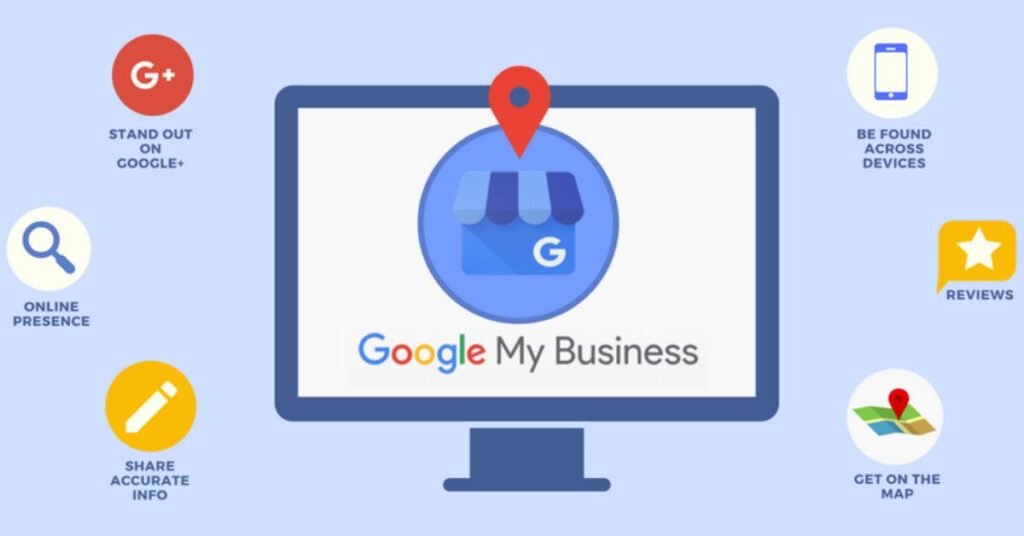Table of contents
What is SEO?
SEO (Search Engine Optimization) is the process of improving a website’s visibility on search engines like Google by optimizing and improving its content, structure, and links and several other factors.
List of SEO MCQs (With Answers):
Here is a list of 157 SEO MCQs along with answers, divided into separate categories.
On-Page SEO
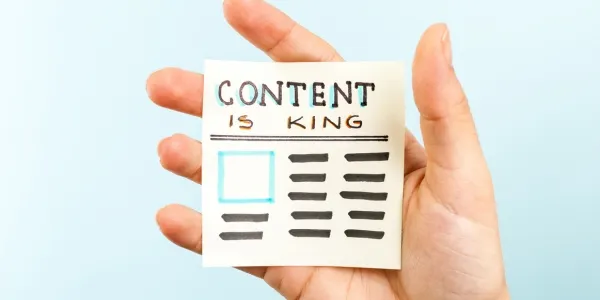
On-page SEO means improving your web pages to get better rankings and traffic.
- What is the primary purpose of a title tag?
A) To describe the website
B) To improve website loading speed
C) To optimize search engine rankings
D) To provide site navigation
Answer: C) To optimize search engine rankings - Which HTML tag is used for meta descriptions?
A)<meta>
B)<description>
C)<title>
D)<head>
Answer: A)<meta> - What is a good length for a meta description?
A) 50-100 characters
B) 100-160 characters
C) 160-200 characters
D) 200-250 characters
Answer: B) 100-160 characters - What is keyword density?
A) The number of keywords on a webpage
B) The percentage of times a keyword appears in content
C) The number of backlinks to a page
D) The length of the content
Answer: B) The percentage of times a keyword appears in content - Which of the following is NOT a part of on-page SEO?
A) Internal linking
B) Meta tags
C) Backlinks
D) URL structure
Answer: C) Backlinks - What does the
<h1>tag represent?
A) The main heading of a webpage
B) A subheading
C) A footer
D) A sidebar
Answer: A) The main heading of a webpage - What is the function of alt text for images?
A) To describe the image to search engines
B) To improve image loading speed
C) To enhance user experience
D) To increase the file size
Answer: A) To describe the image to search engines - What should be included in the URL structure for SEO?
A) Special characters
B) Keywords
C) Random numbers
D) No need for structure
Answer: B) Keywords - Which of the following is the best practice for headings?
A) Using multiple<h1>tags
B) Using keywords in headings
C) Not using any headings
D) Making headings the same color as the background
Answer: B) Using keywords in headings - What is a canonical tag used for?
A) To create multiple versions of a page
B) To prevent duplicate content issues
C) To increase page speed
D) To hide content from search engines
Answer: B) To prevent duplicate content issues - What does a robots.txt file do?
A) Blocks search engines from indexing a site
B) Directs users to specific pages
C) Improves website speed
D) Adds metadata to images
Answer: A) Blocks search engines from indexing a site - What is the recommended character limit for a title tag?
A) 50-60 characters
B) 60-70 characters
C) 70-80 characters
D) 80-90 characters
Answer: A) 50-60 characters - What is internal linking?
A) Linking to external websites
B) Linking to other pages within the same website
C) Linking to social media
D) None of the above
Answer: B) Linking to other pages within the same website - Which of the following is an example of a long-tail keyword?
A) Shoes
B) Best running shoes for women
C) Sportswear
D) Nike
Answer: B) Best running shoes for women - What does schema markup help with?
A) Improving site speed
B) Enhancing search engine understanding of content
C) Increasing bounce rate
D) Reducing backlinks
Answer: B) Enhancing search engine understanding of content - What is LSI in SEO?
A) Latent Semantic Indexing
B) Local Search Index
C) Linked Site Interactivity
D) Large Scale Index
Answer: A) Latent Semantic Indexing - What type of content is most beneficial for on-page SEO?
A) Unrelated blog posts
B) High-quality, relevant content
C) Duplicate content
D) Low-word count pages
Answer: B) High-quality, relevant content - Which factor is essential for optimizing images for SEO?
A) File size
B) Color
C) Alt text
D) Both A and C
Answer: D) Both A and C - What is the primary purpose of an SEO audit?
A) To create new content
B) To analyze and improve SEO performance
C) To design the website
D) To increase social media followers
Answer: B) To analyze and improve SEO performance - Which of the following should be avoided in on-page SEO?
A) Keyword stuffing
B) Using synonyms
C) Relevant internal links
D) Unique content
Answer: A) Keyword stuffing
Off-Page SEO

Off-page SEO involves actions outside your website, like getting backlinks and engaging on social media, to boost your website’s authority and trust level among search engines.
- What is the main goal of off-page SEO?
A) To optimize website content
B) To build backlinks and improve authority
C) To enhance user experience
D) To improve site speed
Answer: B) To build backlinks and improve authority - What is a backlink?
A) A link from one page to another on the same site
B) A link from one website to another
C) A link that leads to a broken page
D) A link in a social media post
Answer: B) A link from one website to another - Which of the following is NOT a method for building backlinks?
A) Guest blogging
B) Creating infographics
C) Buying links
D) Social media sharing
Answer: C) Buying links - What is the term for a website that links to your website?
A) Link target
B) Referring domain
C) Anchor site
D) Resource site
Answer: B) Referring domain - Which type of link is considered the most valuable for SEO?
A) Nofollow link
B) Dofollow link
C) Spam link
D) External link
Answer: B) Dofollow link - What does “link building” refer to?
A) Removing old links
B) Creating links to your website from other sites
C) Designing a website
D) Writing blog posts
Answer: B) Creating links to your website from other sites - What is the role of social media in off-page SEO?
A) It directly improves rankings
B) It helps drive traffic and build brand awareness
C) It replaces traditional SEO
D) It has no effect on SEO
Answer: B) It helps drive traffic and build brand awareness - What is anchor text in SEO?
A) The clickable text in a hyperlink
B) The title of a webpage
C) The URL of a link
D) The image alt text
Answer: A) The clickable text in a hyperlink - Which of the following is a strategy to avoid negative SEO?
A) Ignoring backlinks
B) Monitoring your backlink profile
C) Removing all backlinks
D) Focusing solely on on-page SEO
Answer: B) Monitoring your backlink profile - What does “domain authority” measure?
A) The number of pages on a website
B) The quality of a website’s backlinks
C) The website’s content quality
D) The website’s traffic
Answer: B) The quality of a website’s backlinks - Which of the following is an example of a high-quality backlink?
A) A link from a spammy site
B) A link from a relevant industry blog
C) A link from a directory
D) A link from a social media profile
Answer: B) A link from a relevant industry blog - What is the impact of having too many low-quality backlinks?
A) It boosts rankings
B) It has no effect
C) It can harm your website’s authority
D) It improves user experience
Answer: C) It can harm your website’s authority - What does”nofollow” mean in a link?
A) The link should not be clicked
B) Search engines should ignore the link
C) The link will not pass any SEO value
D) The link is for reference only
Answer: C) The link will not pass any SEO value
- What is the primary benefit of guest blogging?
A) To create more content
B) To generate backlinks and exposure
C) To increase ad revenue
D) To reduce website loading time
Answer: B) To generate backlinks and exposure - Which of the following can harm your off-page SEO?
A) Building quality backlinks
B) Buying backlinks
C) Engaging with your audience on social media
D) Creating shareable content
Answer: B) Buying backlinks - What is “link juice”?
A) A type of backlink
B) The value passed from one site to another through a link
C) A social media metric
D) A type of keyword
Answer: B) The value passed from one site to another through a link - How can you earn backlinks naturally?
A) By asking for them
B) By creating valuable and shareable content
C) By purchasing them
D) By spamming other websites
Answer: B) By creating valuable and shareable content - What is the purpose of social bookmarking?
A) To track website traffic
B) To promote content and generate backlinks
C) To improve site speed
D) To create a sitemap
Answer: B) To promote content and generate backlinks - Which type of content is most likely to be shared on social media?
A) Text-only articles
B) Infographics and videos
C) Legal documents
D) Non-visual content
Answer: B) Infographics and videos - What is the term for the practice of optimizing local listings and citations?
A) Local SEO
B) National SEO
C) Global SEO
D) On-page SEO
Answer: A) Local SEO - What does the term “black hat SEO” refer to?
A) Ethical SEO practices
B) Unethical practices to manipulate rankings
C) SEO for local businesses
D) Optimizing images for search
Answer: B) Unethical practices to manipulate rankings - Which of the following is a social media platform that can help with off-page SEO?
A) Instagram
B) LinkedIn
C) Twitter
D) All of the above
Answer: D) All of the above
Technical SEO

Technical SEO is about making sure that your website’s technical aspects are good for search engines. This includes loading speed, mobile usability, and proper site structure.
- What is a URL sitemap?
A) A list of URLs that are blocked from search engines
B) A file that contains a list of all important pages on a website
C) A map that shows the layout of a website
D) A list of URLs used for paid ads
Answer: B) A file that contains a list of all important pages on a website - What SEO score is considered good?
A) 20-40
B) 40-60
C) 60-80
D) 80-100
Answer: D) 80-100 - What does crawlability refer to?
A) The ability of a website to load quickly
B) The ability of search engines to access and index website content
C) The website’s design
D) The number of visitors to a website
Answer: B) The ability of search engines to access and index website content - Which of the following is an important factor for mobile SEO?
A) Flash content
B) Responsive design
C) Desktop-only optimization
D) Long loading times
Answer: B) Responsive design - What is the purpose of an XML sitemap?
A) To improve page loading speed
B) To help search engines crawl the site more effectively
C) To provide a list of backlinks
D) To show the website’s analytics
Answer: B) To help search engines crawl the site more effectively - What does HTTPS stand for?
A) Hyper Text Transfer Protocol Secure
B) Hyper Text Transfer Protocol
C) High Traffic Transfer Protocol Secure
D) Hyperlink Transfer Protocol Secure
Answer: A) Hyper Text Transfer Protocol Secure - Which of the following can negatively impact page speed?
A) Optimized images
B) Large, unoptimized images
C) Minified CSS and JavaScript
D) A well-structured database
Answer: B) Large, unoptimized images - What is a 404 error?
A) A successful page load
B) A page that cannot be found
C) A server error
D) A redirect error
Answer: B) A page that cannot be found - Which file format is recommended for images on websites?
A) .gif
B) .bmp
C) .jpeg
D) .tiff
Answer: C) .jpeg - What is the significance of the “robots meta tag”?
A) It determines how a page should be indexed
B) It improves website speed
C) It formats content
D) It designs the layout
Answer: A) It determines how a page should be indexed - Which of the following is NOT a component of technical SEO?
A) Website speed
B) Content quality
C) Mobile responsiveness
D) Site architecture
Answer: B) Content quality - What is the purpose of a 301 redirect?
A) To redirect users to a new site
B) To indicate a permanent redirect
C) To improve site speed
D) To create a sitemap
Answer: B) To indicate a permanent redirect - What does a CDN (Content Delivery Network) do?
A) Enhances website security
B) Speeds up content delivery to users
C) Creates backlinks
D) Reduces server load
Answer: B) Speeds up content delivery to users - Which of the following is an essential aspect of mobile SEO?
A) Using flash elements
B) Slow loading times
C) Touchscreen-friendly navigation
D) Desktop-only content
Answer: C) Touchscreen-friendly navigation - What does AMP stand for in SEO?
A) Accelerated Mobile Pages
B) Advanced Media Protocol
C) Accessible Media Pages
D) Automatic Mobile Pages
Answer: A) Accelerated Mobile Pages - What is the purpose of a canonical URL?
A) To improve page load speed
B) To consolidate duplicate URLs
C) To create new pages
D) To enhance image quality
Answer: B) To consolidate duplicate URLs - Which of the following is a common tool for checking website speed?
A) Google Analytics
B) PageSpeed Insights
C) SEMrush
D) Moz
Answer: B) PageSpeed Insights - What is the function of hreflang tags?
A) To redirect users
B) To indicate the language and geographical targeting of a webpage
C) To improve site speed
D) To enhance user engagement
Answer: B) To indicate the language and geographical targeting of a webpage - Which of the following impacts SEO positively?
A) Secure site (HTTPS)
B) Duplicate content
C) Slow loading times
D) Broken links
Answer: A) Secure site (HTTPS) - What is an important aspect of optimizing site architecture?
A) Having no structure
B) Creating a logical hierarchy for content
C) Using random URLs
D) Ignoring user experience
Answer: B) Creating a logical hierarchy for content
Local SEO

Local SEO helps your website show up in local searches, which is important for businesses with physical stores.
Key actions include optimizing Google My Business profile and using local keywords.
- What is the primary goal of local SEO?
A) To improve global rankings
B) To optimize for location-based searches
C) To build backlinks
D) To increase ad revenue
Answer: B) To optimize for location-based searches - Which of the following is crucial for local SEO?
A) Local keywords
B) Generic keywords
C) International backlinks
D) Flash content
Answer: A) Local keywords - What is Google My Business?
A) A social media platform
B) A directory for local businesses
C) A tool for SEO audits
D) A blogging platform
Answer: B) A directory for local businesses - What is a citation in local SEO?
A) A quote from a source
B) A mention of your business on another site
C) A backlink
D) A type of keyword
Answer: B) A mention of your business on another site - Which of the following is an effective strategy for local SEO?
A) Using only generic keywords
B) Encouraging customer reviews
C) Ignoring local directories
D) Focusing solely on backlinks
Answer: B) Encouraging customer reviews - What is the significance of NAP in local SEO?
A) Name, Address, Phone number consistency
B) Network Access Protocol
C) New Audience Promotion
D) National Advertisement Program
Answer: A) Name, Address, Phone number consistency
- How can local reviews impact SEO?
A) They have no impact
B) They can improve local rankings
C) They only affect global SEO
D) They decrease visibility
Answer: B) They can improve local rankings - What type of keywords should you use for local SEO?
A) Long-tail keywords without location
B) Generic keywords
C) Location-based long-tail keywords
D) High-competition keywords
Answer: C) Location-based long-tail keywords - What is the importance of local backlinks?
A) They are less valuable than national backlinks
B) They improve local search visibility
C) They are only useful for global SEO
D) They have no relevance
Answer: B) They improve local search visibility - What does the term “local pack” refer to?
A) A marketing strategy
B) A set of local listings that appear in search results
C) A type of backlink
D) A content format
Answer: B) A set of local listings that appear in search results - What is a key benefit of schema markup for local businesses?
A) Increases website load time
B) Provides additional information to search engines
C) Makes the site look better
D) Reduces the need for content
Answer: B) Provides additional information to search engines - What should be included in a local business’s Google My Business listing?
A) Business hours
B) Random images
C) Outdated information
D) Unverified customer reviews
Answer: A) Business hours - How does mobile optimization impact local SEO?
A) It has no impact
B) It can improve local search rankings
C) It only benefits e-commerce sites
D) It reduces website speed
Answer: B) It can improve local search rankings - What is the first step in creating a local SEO strategy?
A) Building backlinks
B) Keyword research with a local focus
C) Launching ads
D) Creating social media accounts
Answer: B) Keyword research with a local focus - Which of the following is an example of a local SEO tool?
A) Google Analytics
B) Moz Local
C) SEMrush
D) Yoast SEO
Answer: B) Moz Local - What does “geotagging” refer to?
A) Tagging images with keywords
B) Adding geographical identification to content
C) Creating a new website
D) Modifying website speed
Answer: B) Adding geographical identification to content - Which of the following can help improve local SEO?
A) Ignoring social media
B) Participating in local events
C) Using only national keywords
D) Avoiding customer interaction
Answer: B) Participating in local events - How can local content marketing improve SEO?
A) It doesn’t affect SEO
B) It increases engagement and local relevance
C) It slows down the website
D) It complicates content
Answer: B) It increases engagement and local relevance - What type of content is beneficial for local SEO?
A) Generic blog posts
B) Location-specific guides and articles
C) International news
D) Technical documents
Answer: B) Location-specific guides and articles - Which of the following is NOT a local SEO tactic?
A) Optimizing for local keywords
B) Building national backlinks
C) Creating localized content
D) Claiming your Google My Business listing
Answer: B) Building national backlinks
Keyword Research

Keyword research is the process of finding the right words that people are using to search online.
It helps you create content that attracts your target audience and improves your website’s SEO.
- What is the primary purpose of keyword research in SEO?
A) To design graphics
B) To find relevant search terms for content optimization
C) To improve website speed
D) To create backlinks
Answer: B) To find relevant search terms for content optimization - Which tool is commonly used for keyword research?
A) Adobe Photoshop
B) Google Keyword Planner
C) Microsoft Word
D) Facebook Ads Manager
Answer: B) Google Keyword Planner - What is a long-tail keyword?
A) A very short keyword
B) A keyword phrase with three or more words
C) A keyword used for backlinks
D) A keyword related to animal tails
Answer: B) A keyword phrase with three or more words - Why are long-tail keywords beneficial for SEO?
A) They have higher competition
B) They are easier to rank for and attract targeted traffic
C) They are less relevant
D) They only apply to e-commerce sites
Answer: B) They are easier to rank for and attract targeted traffic - What does “search intent” refer to?
A) The speed of search results
B) The reason behind a user’s search query
C) The number of searches
D) The visual design of search engines
Answer: B) The reason behind a user’s search query - What is a keyword density?
A) The total number of keywords on a page
B) The percentage of a keyword in relation to total words
C) The length of keywords
D) The number of backlinks
Answer: B) The percentage of a keyword in relation to total words - What does “semantic search” focus on?
A) Exact keyword matching
B) Understanding user intent and contextual meaning
C) Keyword stuffing
D) Image optimization
Answer: B) Understanding user intent and contextual meaning - Which of the following is NOT a keyword research tool?
A) Ahrefs
B) Google Trends
C) Microsoft Excel
D) SEMrush
Answer: C) Microsoft Excel - What is a keyword difficulty score?
A) A measure of how easy it is to rank for a keyword
B) The number of searches for a keyword
C) A tool for creating content
D) A ranking factor in local SEO
Answer: A) A measure of how easy it is to rank for a keyword
- Which strategy can help improve keyword rankings?
A) Ignoring user intent
B) Creating relevant and high-quality content
C) Using only short keywords
D) Avoiding social media marketing
Answer: B) Creating relevant and high-quality content - What is the purpose of competitor analysis in keyword research?
A) To copy competitors’ designs
B) To identify keywords competitors rank for
C) To increase website load speed
D) To reduce marketing costs
Answer: B) To identify keywords competitors rank for - Which of the following is a common mistake in keyword research?
A) Targeting too broad keywords
B) Using long-tail keywords
C) Analyzing search intent
D) Utilizing multiple keyword tools
Answer: A) Targeting too broad keywords - What type of keyword is likely to have a higher conversion rate?
A) High-competition keywords
B) Informational keywords
C) Transactional keywords
D) Generic keywords
Answer: C) Transactional keywords - What does the term “keyword cannibalization” refer to?
A) Using too many keywords in one article
B) Multiple pages targeting the same keyword
C) Creating unique keywords for every page
D) Deleting old keywords
Answer: B) Multiple pages targeting the same keyword - What is a negative keyword?
A) A keyword that has low search volume
B) A keyword that you want to avoid
C) A keyword that generates traffic
D) A keyword that is out of season
Answer: B) A keyword that you want to avoid - Which metric is essential for evaluating keyword performance?
A) Total number of words
B) Click-through rate (CTR)
C) Font size
D) Color scheme
Answer: B) Click-through rate (CTR) - What does “keyword mapping” involve?
A) Assigning keywords to specific pages
B) Finding new keywords
C) Deleting unused keywords
D) Measuring website traffic
Answer: A) Assigning keywords to specific pages - How often should you update your keyword research?
A) Once a year
B) Every six months
C) Regularly, as search trends change
D) Only when rankings drop
Answer: C) Regularly, as search trends change - What is the impact of voice search on keyword research?
A) It eliminates the need for keyword research
B) It emphasizes natural language and question-based keywords
C) It focuses solely on short keywords
D) It has no impact
Answer: B) It emphasizes natural language and question-based keywords - Which of the following is a benefit of using local keywords?
A) Increases competition
B) Attracts local customers
C) Reduces website speed
D) Limits traffic
Answer: B) Attracts local customers
Content Optimization
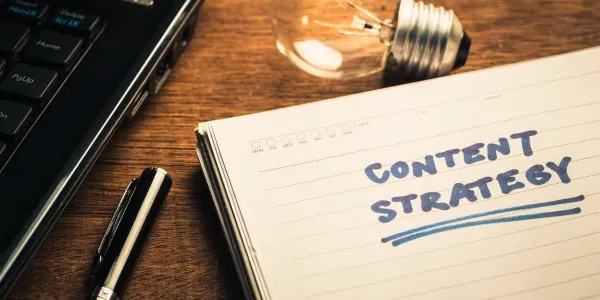
Content optimization improves your website’s content to make it more relevant, valuable, and in line with the user’s search intent.
This includes using keywords well and making sure the information is engaging and useful for the user.
- What is the primary goal of content optimization?
A) To make content visually appealing
B) To improve search engine rankings and user experience
C) To increase website load speed
D) To create multiple pages
Answer: B) To improve search engine rankings and user experience - Which element is crucial for on-page SEO?
A) Header tags
B) Footer design
C) Background color
D) Font choice
Answer: A) Header tags - What does the term “meta description” refer to?
A) The title of a web page
B) A summary of a page’s content that appears in search results
C) The URL of a page
D) The header image
Answer: B) A summary of a page’s content that appears in search results - Why is keyword placement important in content optimization?
A) It affects website speed
B) It helps search engines understand the content’s relevance
C) It increases the number of images
D) It has no impact
Answer: B) It helps search engines understand the content’s relevance - What is the recommended length for a meta description?
A) 50-100 characters
B) 100-160 characters
C) 200-250 characters
D) 300-400 characters
Answer: B) 100-160 characters - How does internal linking benefit SEO?
A) It slows down the website
B) It helps distribute page authority and improves navigation
C) It is irrelevant
D) It is only for e-commerce sites
Answer: B) It helps distribute page authority and improves navigation - Which type of content is highly valued for SEO?
A) Duplicate content
B) Engaging and original content
C) Hidden content
D) Outdated content
Answer: B) Engaging and original content - What is the role of alt text in image optimization?
A) To improve image resolution
B) To describe the image for search engines and visually impaired users
C) To change the image’s color
D) To hide images
Answer: B) To describe the image for search engines and visually impaired users - What should be the focus when creating content for SEO?
A) Keyword stuffing
B) Quality, relevance, and user engagement
C) Length of the content only
D) Visual elements
Answer: B) Quality, relevance, and user engagement - How often should website content be updated?
A) Every day
B) Regularly, to keep it fresh and relevant
C) Once a year
D) Only when rankings drop
Answer: B) Regularly, to keep it fresh and relevant
SEO Tools
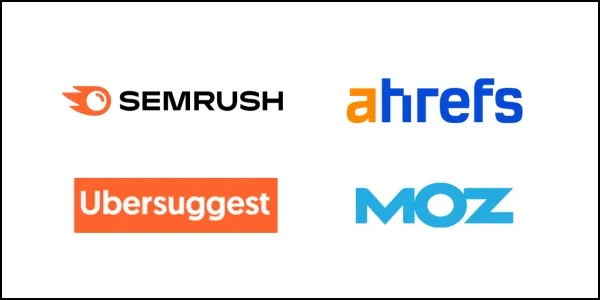
SEO tools help you track and analyze how well your website is performing and how it can improve its SEO.
Tools like SEMrush, Afrefs, UberSuggest and Google Analytics give insights on traffic and keywords, helping you make better decisions in terms of improving your content, getting more backlinks and getting ahead of your competitors in search results.
- What is Google Analytics primarily used for?
A) Social media management
B) Tracking website traffic and user behavior
C) Email marketing
D) Graphic design
Answer: B) Tracking website traffic and user behavior - Which tool helps monitor a website’s search engine rankings?
A) Google Docs
B) SEMrush
C) Microsoft Excel
D) Adobe Illustrator
Answer: B) SEMrush - What is the primary function of Google Search Console?
A) To create graphics
B) To manage website ads
C) To monitor site performance and indexing issues
D) To design websites
Answer: C) To monitor site performance and indexing issues - Which SEO tool is best for keyword research?
A) Moz Pro
B) Google Ads
C) Canva
D) WordPress
Answer: A) Moz Pro - What does the “backlink checker“ feature do?
A) Analyzes website load speed
B) Identifies and evaluates a website’s backlinks
C) Checks for spelling errors
D) Monitors social media engagement
Answer: B) Identifies and evaluates a website’s backlinks - Which of the following is a feature of Ahrefs?
A) Email marketing
B) Competitor analysis and backlink tracking
C) Graphic design
D) Content writing
Answer: B) Competitor analysis and backlink tracking - What is the purpose of a rank tracker?
A) To create social media posts
B) To monitor the performance of specific keywords over time
C) To design a website
D) To analyze image optimization
Answer: B) To monitor the performance of specific keywords over time - Which tool provides insights on site speed and user experience?
A) Google Optimize
B) Google PageSpeed Insights
C) Adobe Photoshop
D) Microsoft Word
Answer: B) Google PageSpeed Insights - What is the primary use of the Screaming Frog SEO Spider tool?
A) Social media posting
B) Website crawling and auditing for SEO issues
C) Email marketing
D) Graphic design
Answer: B) Website crawling and auditing for SEO issues - Which of the following tools is NOT primarily an SEO tool?
A) Moz
B) SEMrush
C) Canva
D) Ahrefs
Answer: C) Canva
Algorithm Updates

Search engines update their algorithms regularly to improve search results and provide more relevant and desired results to its users.
Knowing about updates like Panda and Penguin helps you adjust your SEO strategies and keep your rankings.
- What is the purpose of Google’s Panda update?
A) To improve website speed
B) To penalize low-quality content
C) To enhance ad placements
D) To optimize images
Answer: B) To penalize low-quality content
- What does the Penguin update target?
A) High-quality content
B) Spammy link profiles and manipulative link practices
C) Mobile-friendliness
D) Site speed
Answer: B) Spammy link profiles and manipulative link practices - What is the primary goal of the Hummingbird update?
A) To improve website design
B) To enhance semantic search and understand user intent
C) To penalize backlinks
D) To increase ad placements
Answer: B) To enhance semantic search and understand user intent - Which update is known for focusing on mobile usability?
A) Panda
B) Penguin
C) Mobilegeddon
D) Hummingbird
Answer: C) Mobilegeddon - What is the focus of the RankBrain algorithm?
A) Image optimization
B) Machine learning to improve search results
C) Ad placement optimization
D) Keyword stuffing
Answer: B) Machine learning to improve search results - Which update introduced the concept of “E-A-T“?
A) Hummingbird
B) Panda
C) Medic
D) Penguin
Answer: C) Medic - What does “E-A-T” stand for?
A) Engagement, Action, Traffic
B) Expertise, Authoritativeness, Trustworthiness
C) Efficiency, Aesthetics, Technology
D) Evaluation, Analysis, Testing
Answer: B) Expertise, Authoritativeness, Trustworthiness - What was the primary focus of the BERT update?
A) Reducing page load times
B) Understanding the context of words in search queries
C) Increasing the number of ads
D) Enhancing graphic design
Answer: B) Understanding the context of words in search queries - How often does Google typically update its search algorithms?
A) Every month
B) Occasionally, with significant updates several times a year
C) Only once a year
D) Never
Answer: B) Occasionally, with significant updates several times a year - What is the impact of algorithm updates on SEO?
A) They have no impact
B) They can change rankings and require adjustments in SEO strategies
C) They only affect paid ads
D) They increase website costs
Answer: B) They can change rankings and require adjustments in SEO strategies
Other SEO MCQ
This category covers various important SEO topics that don’t fit in any of the above categories.
It includes MCQs about basic principles and new trends in search engine optimization.
- What does SERP stand for?
A) Search Engine Ranking Process
B) Search Engine Results Page
C) Search Engine Reporting Program
D) Search Engine Referral Page
Answer: B) Search Engine Results Page - What can SEO be described as __?
A) A way to improve website traffic through paid ads
B) A process of optimizing a website to rank higher in search engines
C) A strategy for increasing social media followers
D) A method for creating online content
Answer: B) A process of optimizing a website to rank higher in search engines - What are the two main parts of SEO?
A) On-Page SEO and Off-Page SEO
B) Organic SEO and Paid SEO
C) Keyword Research and Link Building
D) Technical SEO and Content SEO
Answer: A) On-Page SEO and Off-Page SEO - Which of the following is a part of SEO?
A) On-Page SEO
B) Off-Page SEO
C) Technical SEO
D) All of the above
Answer: D) All of the above - What does SEO stand for?
A) Social Engagement Optimization
B) Search Engine Optimization
C) Sales Earning Overview
D) Site Enhancement Online
Answer: B) Search Engine Optimization - What is the main purpose of SEO?
A) To generate traffic and improve online visibility
B) To design websites
C) To create social media accounts
D) To reduce advertising costs
Answer: A) To generate traffic and improve online visibility - Which of the following is a key factor in local SEO?
A) Social media engagement
B) Keyword density
C) Google My Business optimization
D) Website color scheme
Answer: C) Google My Business optimization - What does “CTR” stand for in SEO?
A) Click-through rate
B) Cost to reach
C) Customer traffic ranking
D) Content transfer rate
Answer: A) Click-through rate - Which of the following is NOT a search engine?
A) Google
B) Bing
C) Yahoo
D) Facebook
Answer: D) Facebook - What is an SEO audit?
A) A financial review
B) A comprehensive analysis of a website’s SEO performance
C) A marketing plan
D) A graphic design critique
Answer: B) A comprehensive analysis of a website’s SEO performance - What does “schema markup” help with?
A) Increasing social media followers
B) Enhancing search engine understanding of page content
C) Improving website speed
D) Creating images
Answer: B) Enhancing search engine understanding of page content - Which factor does not directly impact SEO rankings?
A) Backlinks
B) Content quality
C) Domain age
D) The color of the website
Answer: D) The color of the website - What is “bounce rate”?
A) The percentage of visitors who leave a site after viewing only one page
B) The number of clicks on a website
C) The time spent on a website
D) The number of ads on a page
Answer: A) The percentage of visitors who leave a site after viewing only one page - Which of the following is a characteristic of a high-quality backlink?
A) From a reputable and relevant website
B) From a low-traffic website
C) From a social media profile
D) From a website with no content
Answer: A) From a reputable and relevant website - What does the term “nofollow” attribute do?
A) It boosts the website’s SEO
B) It tells search engines not to follow a specific link
C) It increases page speed
D) It improves mobile usability
Answer: B) It tells search engines not to follow a specific link - What is the significance of a sitemap for SEO?
A) It enhances visual appeal
B) It helps search engines understand website structure and index pages
C) It increases website speed
D) It reduces costs
Answer: B) It helps search engines understand website structure and index pages - What does “page authority“ indicate?
A) The number of pages on a site
B) The likelihood of a page to rank well in search results
C) The speed of a page
D) The color scheme of a website
Answer: B) The likelihood of a page to rank well in search results - Which of the following is a way to improve local SEO?
A) Ignoring local keywords
B) Claiming and optimizing Google My Business listing
C) Using generic keywords only
D) Removing customer reviews
Answer: B) Claiming and optimizing Google My Business listing - What does a 404 error indicate?
A) The page is loading too slowly
B) The requested page could not be found
C) The website is down
D) The site has too many ads
Answer: B) The requested page could not be found - What is the role of social media in SEO?
A) It has no impact
B) It helps increase brand visibility and traffic
C) It only helps with paid ads
D) It reduces website performance
Answer: B) It helps increase brand visibility and traffic - What is the purpose of using keywords in URLs?
A) To make them longer
B) To improve SEO and user understanding of the page content
C) To confuse search engines
D) To increase bounce rate
Answer: B) To improve SEO and user understanding of the page content - Which of the following is a feature of mobile-friendly design?
A) Small text size
B) Responsive layout that adapts to different screen sizes
C) Complex navigation
D) Fixed images
Answer: B) Responsive layout that adapts to different screen sizes - What is the significance of LSI keywords in SEO?
A) They are irrelevant
B) They help search engines understand the context of the main keyword
C) They increase ad revenue
D) They are only for local SEO
Answer: B) They help search engines understand the context of the main keyword - What is the impact of duplicate content on SEO?
A) It boosts rankings
B) It can harm rankings due to confusion over which content to index
C) It has no impact
D) It improves user engagement
Answer: B) It can harm rankings due to confusion over which content to index - Which of the following actions can negatively affect SEO?
A) Regular content updates
B) Ignoring mobile optimization
C) Improving site speed
D) Using social media effectively
Answer: B) Ignoring mobile optimization
Download SEO MCQ with Answers PDF
Download our FREE PDF packed with 157 seo mcq questions and answers.
It covers all essential SEO topics like on-page, off-page, keyword research, and technical SEO.
Download it today and start preparing for your next SEO exam or interview!
It is perfect for students, job seekers, or anyone looking to improve their understanding of search engine optimization.
Tips for Preparing for SEO Quizzes or Exams
- Understand the Basics: Make sure you are familiar with fundamental SEO concepts like on-page, off-page, and technical SEO.
- Practice with MCQs: Use multiple-choice questions (MCQs) to test your knowledge and identify weak areas. This way you can start working on improving them.
- Stay Updated: SEO keeps evolving, so keep up with the latest Search Engine algorithm updates and best practices.
- Use Tools: Familiarize yourself with tools like Google Analytics, Ahrefs and SEMrush to get practical insights and deeper knowledge.
- Review Case Studies: Learn from real-world examples and case studies to understand how SEO works and see SEO strategies in action.
- Focus on Technical SEO: Understand the role of robots.txt, XML sitemaps, site speed, and mobile responsiveness. Learn to troubleshoot common SEO issues like crawl errors and broken links.
- Join SEO Communities: Participate in forums like Reddit’s r/SEO or Facebook SEO groups. Engage with peers to discuss topics, share resources, and ask questions.
Conclusion about SEO MCQs
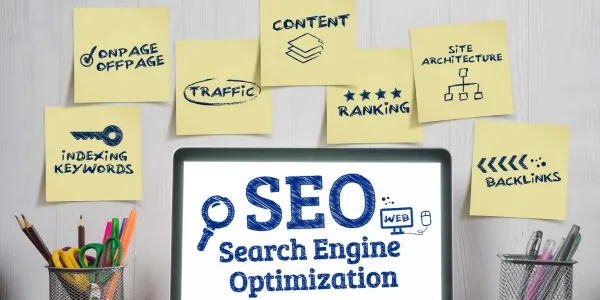
SEO is a dynamic field that keeps on evolving, and mastering its concepts can open doors to many new opportunities.
By practicing with MCQs and staying updated on industry trends & knowledge, you can sharpen your skills and excel in quizzes, exams, and even real-world SEO applications.
Whether you’re a beginner or an advanced learner, a solid foundation in SEO principles will help you succeed in the competitive digital marketing landscape.
Keep learning and practicing SEO to stay ahead!
Frequently Asked Questions (FAQs)
1. What are SEO MCQs?
SEO MCQs (Multiple-Choice Questions) are questions designed to test your knowledge about search engine optimization, covering topics like on-page SEO, off-page SEO, keyword research, and more.
2. Who can benefit from SEO MCQs?
SEO MCQs are useful for students, digital marketers, job seekers, and anyone looking to enhance or test their SEO skills & knowledge.
3. What is a SEO quiz?
An SEO quiz is a set of multiple-choice questions (MCQs) that test your knowledge about Search Engine Optimization (SEO) concepts, strategies, and practices. It is one of the best ways to improve your SEO knowledge.
4. How many MCQs are available in this article?
The article includes over 157 MCQs covering various aspects of SEO like on-page SEO, off-page SEO, local SEO, Content Optimization, SEO Tools and much more.
5. Are the answers provided for the MCQs?
Yes, each MCQ comes with the correct answer provided to help you cross verify your knowledge.
6. What SEO topics are covered in these MCQs?
The MCQs cover topics like on-page SEO, off-page SEO, technical SEO, keyword research, content optimization, local SEO, SEO tools, and Google algorithm updates.
7. Can I download these SEO MCQs?
Yes, you can download a PDF of our list of 157 SEO MCQs with answers by clicking here.
8. Are the SEO MCQs suitable for beginners?
Yes, the MCQs are designed for all levels, from beginners to advanced SEO professionals.
9. How can these SEO MCQs help me in my career?
Practicing SEO MCQs can help improve your understanding of SEO concepts and find out your weak spots, which is valuable for SEO certifications, job interviews, or improving your SEO skills for work and future career in digital marketing.
10. Do these MCQs follow the latest SEO trends?
Yes, the questions are updated to reflect current SEO trends, practices and Google’s algorithm updates.
11. Can I use these MCQs to prepare for an SEO certification exam?
These MCQs can be an excellent resource for preparing for SEO certification exams like Google Analytics or other SEO certifications.
12. How often are the SEO MCQs updated?
The MCQs are updated regularly to reflect changes in SEO practices, Google’s algorithm updates or any other new trends.
13. Can these SEO MCQs help improve my website ranking?
Practicing SEO MCQs can improve your understanding of SEO strategies, which in turn can help you apply them effectively on your website, which will result in improving your website rankings.
14. Is there a specific order to follow when answering these MCQs?
There’s no specific order; you can start with any category, depending on your current level or interest. You can use the table of contents provided at the top of the page to skip to any section you desire.
15. What level of SEO expertise is required to answer these MCQs?
These MCQs range from beginner to advanced level, catering to different levels of SEO knowledge.
Share this Article on:




